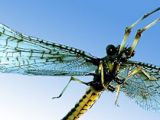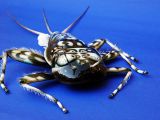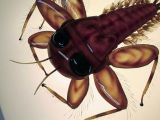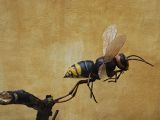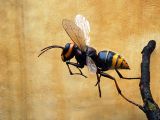It seems like only last week did someone finally figure out how to produce relatively realistic hair on 3D printed objects, and the method needed a better than average 3D printer to pull it off. Now, though, it's like 3D printing technology has made a huge leap in detail.
You may or may not have heard of the Form 1+ 3D printer. It is a machine from Formlabs which uses stereolithography (SLA) 3D printing to make high-detail objects from resin, by curing it with UV light.
Formlabs machines are responsible for such things as a 1:60 scale 3D printed roller coaster and the 3D printed magnifying lens. In fact, the Form 1+ 3D printer was used in both cases.
Now, the same 3D printer has been employed in the making of inanimate insects that look so lifelike that you might mistake them for the real thing.
Klaus Leitl's 3D printed insect gallery
Klaus Leitl is a man living in Austria. A man who modeled the insects on a scale of 30:1, which is probably why you can actually see their every detail with the naked eye.
The simple fact is that they are produced at a much larger scale than the insects actually reach in nature, although that still doesn't make them much larger than 24 – 180 cm in length / 70 inches.
Among the 3D printed insects in his collection are a blackfly-larva, a mayfly, a stonefly, an aquatic beetle, a hornet (a really, really big wasp basically), a dragonfly, and even an ant.
The dragonfly is the one that rates at 180 cm, and we're left wondering if that's actually a typo. 180 cm is a pretty big size. Then again, the scale is 30 times larger.
Also, Leitl didn't make all the insects in a single go. Some of them were split into two separate parts, after which Leitl hollowed them out and exported them as STL files, which he later scaled in netfabb basic.
After the sections were individually printed, he glued them together using the same material they were printed from: clear photosensitive resin layered in the appropriate places, which he later cured with a UV lamp.
Some of the pieces had to be sanded and painted using an airbrush (Schminke Aero color ink was used) and then a final acrylic lacquer was added.
The end result was the “Life Under Water” exhibit in the National Park Hohe Tauern, in Ferleiten, Salzburg (Austria). Which is odd because most of the insects aren't aquatic in the least.
Don't expect to be able to accomplish the same
At least not easily. For one thing, you need some really good skills in 3D modeling. For another, the Form1+ 3D printer costs $3,299 / €2,604, well outside the price range of most consumers.
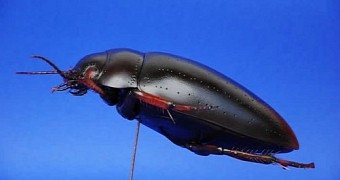
 14 DAY TRIAL //
14 DAY TRIAL // 
